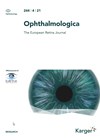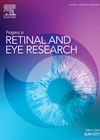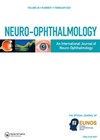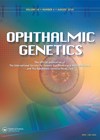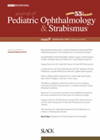
Journal Reviews
Vascular density evaluated by SS-OCTA and microperimetry in RP
The aim of this retrospective, observational cross-sectional one-year study was to evaluate the retinal and choroidal vessel density in the macular area with swept-source optical coherence tomography angiography (SS-OCTA) in patients of retinitis pigmentosa (RP), to compare this data with...
Ground control to optic nerve – the space oddity to be studied
The authors explore the clinical entity that is known as Spaceflight Associated Neuro-ocular Syndrome (SANS). Its clinical characteristics include optic disc oedema, hyperopic refractive shifts, globe flattening, and chorioretinal folds, may pose a health risk for future space exploration. Understanding...
Covid-19 ophthalmopathy
Ocular involvement is not uncommon in patients with Covid-19. However, the incidence of Covid-19 ophthalmopathy is unclear. The authors present a prospective case series including 2445 consecutive cases presenting at a neuro-ophthalmology clinic during the last resurgence of SARS-CoV-2 infection....
Long-term incidence and survival trends in retinoblastoma in the USA
The authors present a retrospective observational study of 5730 patients diagnosed with retinoblastoma between 1996 and 2018. Data on demographics, age at diagnosis, treatment and survival were extracted from national registries with coverage of 99% of the population of the...
Comparison of surgical procedures for third cranial nerve palsy with large-angled exotropia
The authors present a retrospective case review with the aim to compare two surgical procedures. Cases were operated on at a single centre, by a single surgeon, over a 14-year period. The inclusion criteria were cases with congenital or acquired...
Intra-arterial carboplatin therapy not associated with hearing loss
The aim of this study was to determine if administration of intra-arterial carboplatin (IAC) affected the hearing of children being treated for retinoblastoma. This was a prospective study in which 22 of 40 consented children completed therapy. Hearing was tested...
Profile of presentation, follow-up and management of orbital myositis
This retrospective study reviewed the demographic characteristics of patients with orbital myositis, their clinical profile, management options, outcomes and predictive factors for recurrence. The study included 52 patients (55 eyes; 3% bilateral involvement), 36 females, with mean age at presentation...
Results of vitrectomy in epiretinal membranes secondary to retinal vein occlusions
This retrospective, observational multicentre study investigated the anatomic and functional results of vitrectomy associated with the peeling of secondary epiretinal membranes (ERM) in patients with retinal vein occlusion (RVO) and determined the prognostic factors of surgical outcomes. Data was collected...
Scleral fixation using Gore-Tex suture of a subluxated PCIOL
This was a retrospective single-centre study of patients who underwent lasso in-the-bag scleral fixation of a subluxated posterior chamber (PC) intraocular lens (IOL) using the snare technique with Gore-Tex suture from 2019 to 2021. Functional outcome was analysed by clinical...
How does teprotumumab impact on ocular misalignment in thyroid eye disease?
A retrospective case review was conducted with the aim of exploring the effect of teprotumumab on objective diplopia. Adults diagnosed with thyroid eye disease, presenting with diplopia and receiving a standard six-month treatment with teprotumumab at a single centre were...
Difference in retinoblastoma phenotypes based on maternal or paternal inheritance
The aim of this study was to explore the difference in presentation of retinoblastoma between paternal and maternal inheritance. A retrospective medical records review methodology was employed. Records of individuals diagnosed with a retinoblastoma with at least one symptomatic family...
Physical activity levels in adolescents with amblyopia
The purpose of this study was to investigate the association between amblyopia and the self-reported type and amount of physical activity in adolescents aged 12–18 years. The study recruited 26 amblyopes and 26 control subjects: 24 female and 28 males....

